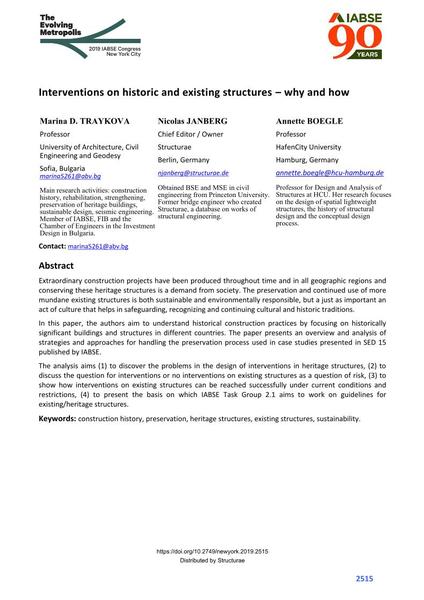Interventions on historic and existing structures – why and how

|
|
|||||||||||
Détails bibliographiques
| Auteur(s): |
Marina D. Traykova
Nicolas Janberg Annette Bögle (HafenCity University) |
||||
|---|---|---|---|---|---|
| Médium: | papier de conférence | ||||
| Langue(s): | anglais | ||||
| Conférence: | IABSE Congress: The Evolving Metropolis, New York, NY, USA, 4-6 September 2019 | ||||
| Publié dans: | The Evolving Metropolis | ||||
|
|||||
| Page(s): | 2515-2520 | ||||
| Nombre total de pages (du PDF): | 6 | ||||
| DOI: | 10.2749/newyork.2019.2515 | ||||
| Abstrait: |
Extraordinary construction projects have been produced throughout time and in all geographic regions and conserving these heritage structures is a demand from society. The preservation and continued use of more mundane existing structures is both sustainable and environmentally responsible, but a just as important an act of culture that helps in safeguarding, recognizing and continuing cultural and historic traditions. In this paper, the authors aim to understand historical construction practices by focusing on historically significant buildings and structures in different countries. The paper presents an overview and analysis of strategies and approaches for handling the preservation process used in case studies presented in SED 15 published by IABSE. The analysis aims (1) to discover the problems in the design of interventions in heritage structures, (2) to discuss the question for interventions or no interventions on existing structures as a question of risk, (3) to show how interventions on existing structures can be reached successfully under current conditions and restrictions, (4) to present the basis on which IABSE Task Group 2.1 aims to work on guidelines for existing/heritage structures. |
||||
| Mots-clé: |
durabilité histoire de la construction structures existantes
|
||||
